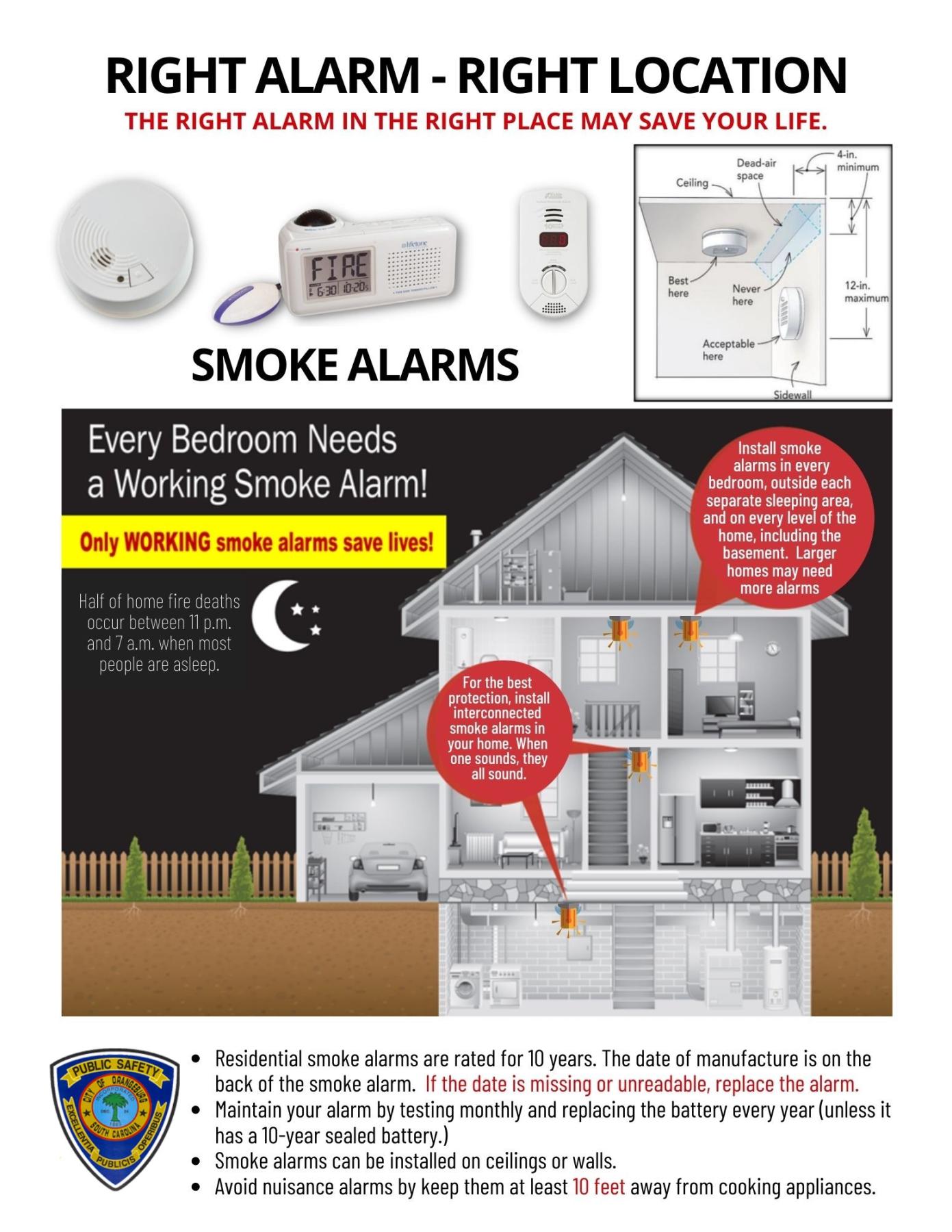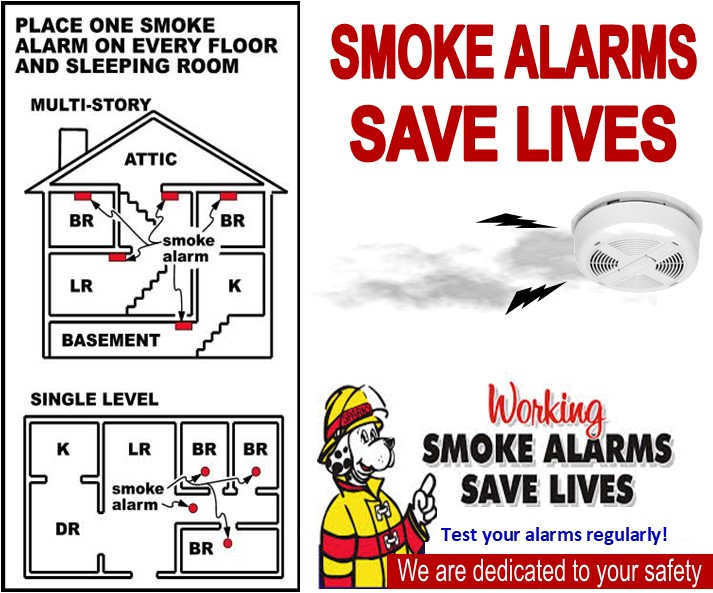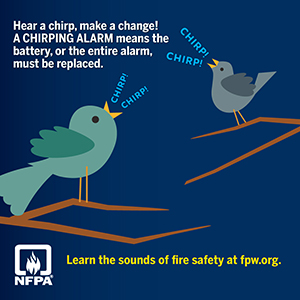Smoke Alarms
Smoke Alarms
**Kidde recalls TruSense Smoke Alarms and Combination Smoke/Carbon Monoxide Alarms.** LEARN MORE
Smoke alarms save lives. Smoke alarms that are properly installed and maintained play a vital role in reducing fire deaths and injuries. If there is a fire in your home, smoke spreads fast and you need smoke alarms to give you time to get out.
 Here's what you need to know:
Here's what you need to know:
- A closed door may slow the spread of smoke, heat and fire. Install smoke alarms in every sleeping room and outside each separate sleeping area. Install alarms on every level of the home.
- Smoke alarms should be interconnected. When one sounds, they all sound.
- Large homes may need extra smoke alarms.
- Test your smoke alarms at least once a month. Press the test button to be sure the alarm is working.
- When a smoke alarm sounds, get outside and stay outside.
- Replace all smoke alarms in your home every 10 years.
- There are two kinds of alarms. Ionization smoke alarms are quicker to warn about flaming fires. Photoelectric alarms are quicker to warn about smoldering fires. It is best to use of both types of alarms in the home. Learn more in the box on the right side of this page. →
- Learn the most common causes for false alarms HERE
- Learn the sounds of safety. What is your alarm telling you?

